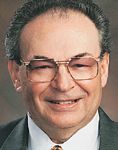Article
Biaxial phaco with torsional ultrasound enhanced with tip and technique modifications
Author(s):
A new phaco tip (Fine OZil Tip, MicroSurgical Technology) for use with a proprietary handpiece (OZil, Alcon Laboratories) improves the safety and efficiency of phacoemulsification using torsional ultrasound with a biaxial microincisional technique. Modification of the phaco parameters improves chopping and segment removal.

Key Points
San Francisco-Modifications in phacoemulsification parameters and tip design enhance the safety and efficiency of biaxial microincision surgery performed with torsional ultrasound using a proprietary handpiece and phaco system (OZil and Infiniti Vision System, Alcon Laboratories), said I. Howard Fine, MD.

The commercially available, 0.9-mm phaco tip (Fine OZil Tip, MicroSurgical Technology) features a bevel-down configuration and moves the bend closer to the tip opening (3.3 mm from the end) as compared with a standard Kelman-style tip, according to Dr. Fine, clinical professor of ophthalmology, Casey Eye Institute, Oregon Health & Science University, Portland. The operating parameters include the use of 100% longitudinal ultrasound with high vacuum for chopping. Then, for segment mobilization, maximum vacuum is lowered by about 100 mm Hg and ultrasound is switched to torsional with small, infrequent bursts of longitudinal ultrasound.
"With the bevel down, all of the ultrasound energy is directed toward the cataract and none goes toward the endothelium or trabecular meshwork," he said. "In addition, it is easy to achieve vacuum because the bevel down will be occluded as soon as it touches the nucleus rather than having to be embedded, and it allows mobilization of lens material from the level of the capsulorhexis up without having to go deeper into the endolenticular space."
Movement of the bend closer to the end of the tip was included in the design in order to keep the "knuckle" outside of the incision for improved thermal safety. The sleeveless tip contains no aspiration bypass port, which would grab the iris, according to Dr. Fine.
Phaco parameters
For chopping, Dr. Fine uses 100% longitudinal phaco with a maximum vacuum of 370 mm Hg, and he completes all of the chopping before mobilizing the pie-shaped segments. He said that he believes the torsional movement widens the tunnel and thereby makes a less advantageous purchase.
"Using only longitudinal ultrasound keeps the tunnel where the tip lies small, and it enables me to lollipop and control the nucleus," he said. "I tend not to bury the tip, and so I don't push down on the nuclear material, but rather just touch the nucleus with the tip to occlude, let the higher vacuum pull the nucleus up, then lift the phaco needle and pull it in a downward diagonal direction with the irrigating chopper."
This technique avoids the creation of force that can occur when embedding the tip and that can be conveyed to the capsular bag or zonular apparatus, he explained. For segment mobilization, maximum vacuum is set at 270 mm Hg, and a 75% power boost of longitudinal phaco is added about 5% of the time to keep the lens material from occluding the tip.
"It is my belief that torsional phaco is most efficient in removing the nucleus when the lens material is in front of the tip where it can be sheared rather than when it is embedded onto the tip," Dr. Fine said. "And, with the bevel down toward the nucleus, there is no need to go deeply into the endolenticular space. Rather, the pie-shaped segments can be rapidly mobilized out from the level of the capsulorhexis."
He said he has observed that as an interesting, but unexplained, phenomenon, torsional ultrasound seems to mobilize the epinucleus uniquely, engaging it and flipping it spontaneously.
"Using longitudinal ultrasound, I would have to shave the rim of the epinucleus and then flip," Dr. Fine said. "However, in almost all cases using torsional ultrasound, the epinucleus is mobilized by the tip in such a way that it is flipped upside down by the torsional movement without my having to use a second instrument."
Newsletter
Don’t miss out—get Ophthalmology Times updates on the latest clinical advancements and expert interviews, straight to your inbox.





